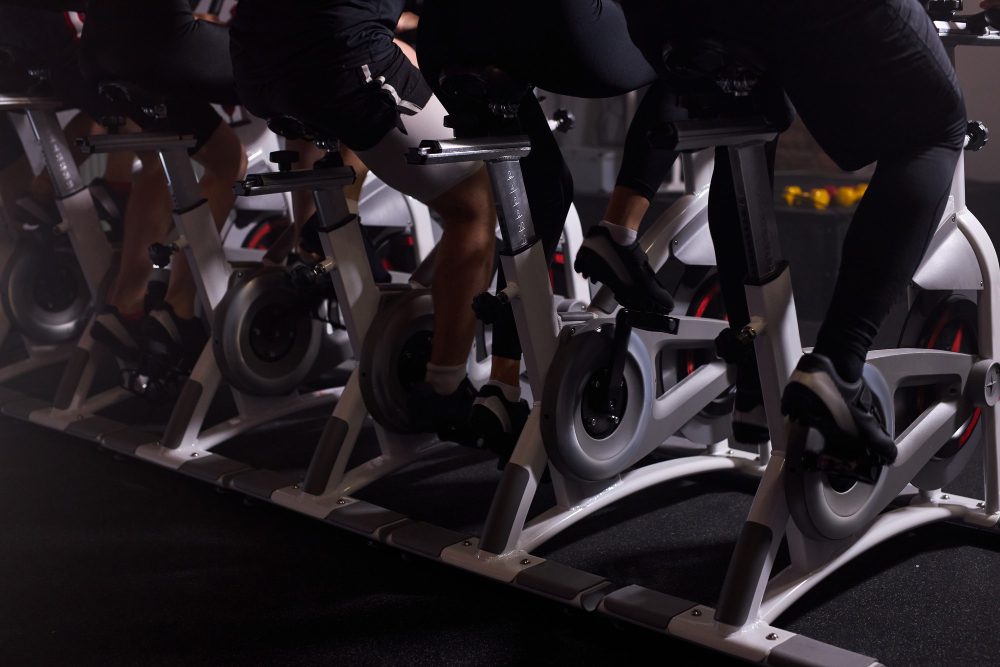What are the disadvantages of an upright bike?
An upright bike, also known as a stationary or exercise bike, is a popular piece of fitness equipment that offers a variety of benefits. From cardiovascular conditioning to lower body strength building, it provides a convenient and effective way to stay active at home or in the gym. However, like any exercise equipment, upright bikes also have their drawbacks. In this article, we will explore some of the disadvantages of using an upright bike and provide insights into how you can mitigate them.
Limited Upper Body Workout
One of the main disadvantages of an upright bike is the limited involvement of the upper body muscles. While pedaling engages your leg muscles, it does not provide a comprehensive workout for your arms, shoulders, and core. This can be a disadvantage if you are looking for a full-body workout or if you specifically want to target your upper body muscles.
Solution: To compensate for the lack of upper body engagement, you can incorporate additional exercises into your workout routine. Consider adding strength training exercises, such as push-ups or dumbbell curls, to target your upper body muscles. Alternatively, you can use a different exercise machine, such as a rowing machine or an elliptical trainer, to achieve a more balanced workout.
Potential Discomfort
Another downside of using an upright bike is the potential discomfort it may cause, especially for individuals who are not accustomed to sitting on a bike saddle for extended periods. The hard seat and forward leaning position can lead to discomfort or even pain in the buttocks, lower back, and wrists. This can discourage some people from using upright bikes regularly.
Solution: To minimize discomfort, it is crucial to find an upright bike with an adjustable seat and handlebars. Adjusting these components to fit your body properly can help alleviate pressure points and improve overall comfort. Additionally, wearing padded cycling shorts or using a gel seat cushion can provide extra cushioning and reduce discomfort during longer workouts.
Less Dynamic Workout
Compared to outdoor cycling or other cardio exercises like running or swimming, an upright bike offers a less dynamic workout experience. The fixed position and repetitive motion of pedaling may become monotonous and less challenging over time. This lack of variety can lead to boredom and decreased motivation to continue exercising.
Solution: To make your upright bike workouts more engaging, you can incorporate interval training or vary the resistance levels throughout your session. Adding music or watching TV shows or movies can also help alleviate boredom. Additionally, consider cross-training by incorporating other forms of cardio exercise or strength training into your fitness routine to keep things interesting.
“Variety is crucial when it comes to workouts. Don’t limit yourself to just one exercise machine, as it may lead to boredom and decreased motivation.” – Fitness Expert
Less Weight-Bearing Impact
While the low-impact nature of an upright bike makes it suitable for individuals with joint issues or those recovering from injuries, it may not be the best choice for those looking to improve bone density or overall bone health. Since an upright bike does not involve weight-bearing impact, it may not provide the same benefits as weight-bearing exercises like running or jumping.
Solution: If you are concerned about bone health, it is important to incorporate weight-bearing activities into your exercise routine. Consider adding exercises such as walking, jogging, or jumping rope to complement your upright bike workouts. Strength training exercises that target the bones, such as weightlifting or bodyweight exercises, can also be beneficial.
In conclusion, while an upright bike offers numerous advantages, including cardiovascular conditioning and lower body strength building, there are some disadvantages to consider. These include limited upper body engagement, potential discomfort, less dynamic workout experience, and lower weight-bearing impact. By implementing the solutions provided and incorporating variety into your fitness routine, you can mitigate these drawbacks and make the most out of your upright bike workouts. Remember, it is always essential to listen to your body and make adjustments as needed for a safe and enjoyable exercise experience.
Can you lose weight with an upright bike?
When it comes to weight loss, an upright bike can be a great tool to incorporate into your fitness routine. Regular exercise on an upright bike can help you burn calories and shed those extra pounds. Here’s why:
Cardiovascular Benefits
Using an upright bike can provide an effective cardiovascular workout. By elevating your heart rate and increasing blood circulation, you’ll be able to burn calories and improve your overall fitness level. Regular cardio exercise has been linked to weight loss, as it helps create a calorie deficit.
Low-Impact Exercise
One of the advantages of an upright bike is that it offers a low-impact form of exercise. This means that compared to high-impact activities like running, cycling on an upright bike is easier on your joints, making it suitable for people with joint pain or injuries. The ability to engage in longer workout sessions without discomfort can contribute to weight loss.
Resistance Training
Most upright bikes have adjustable resistance settings, allowing you to increase or decrease the difficulty of your workout. By increasing the resistance, you can simulate riding uphill and engage more muscles in your legs, glutes, and core. This additional resistance helps build muscle strength and can lead to increased calorie burning during and after your workout.
Variety and Motivation
Many upright bikes offer different pre-programmed workouts or virtual cycling routes, providing variety and keeping your workouts interesting. This can be a crucial factor in maintaining motivation and consistency, which are key elements for successful weight loss. Changing up your routine prevents boredom and helps you stay dedicated to your fitness goals.
Track Your Progress
An upright bike often comes with a display screen that tracks your workout statistics, such as distance, speed, time, and calories burned. This feedback allows you to monitor your progress and set goals for yourself. By tracking your efforts, you can stay accountable and motivated, which is crucial when aiming for weight loss.
Remember, while an upright bike can be a valuable tool for weight loss, it’s essential to combine it with a balanced diet and a comprehensive exercise routine for optimal results.
In conclusion, using an upright bike can contribute to weight loss due to its cardiovascular benefits, low-impact nature, resistance training capabilities, variety in workouts, and the ability to track your progress. Incorporating regular exercise on an upright bike into your lifestyle can help you achieve your weight loss goals while keeping you motivated to stay on track. So hop on that bike and start pedaling towards a healthier you!



